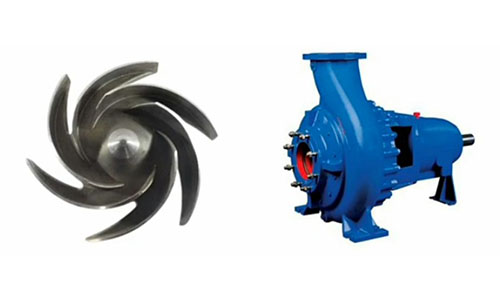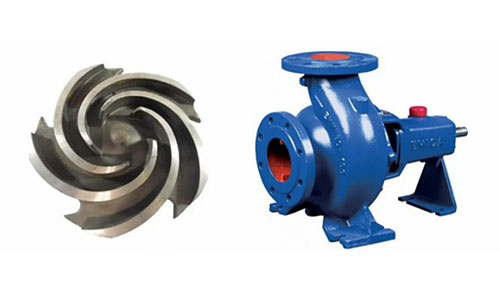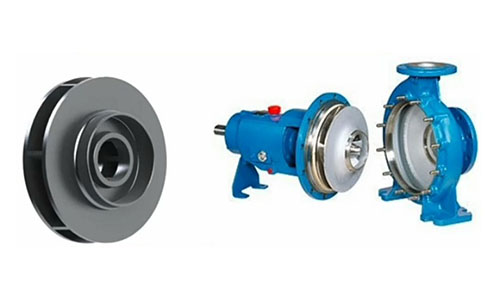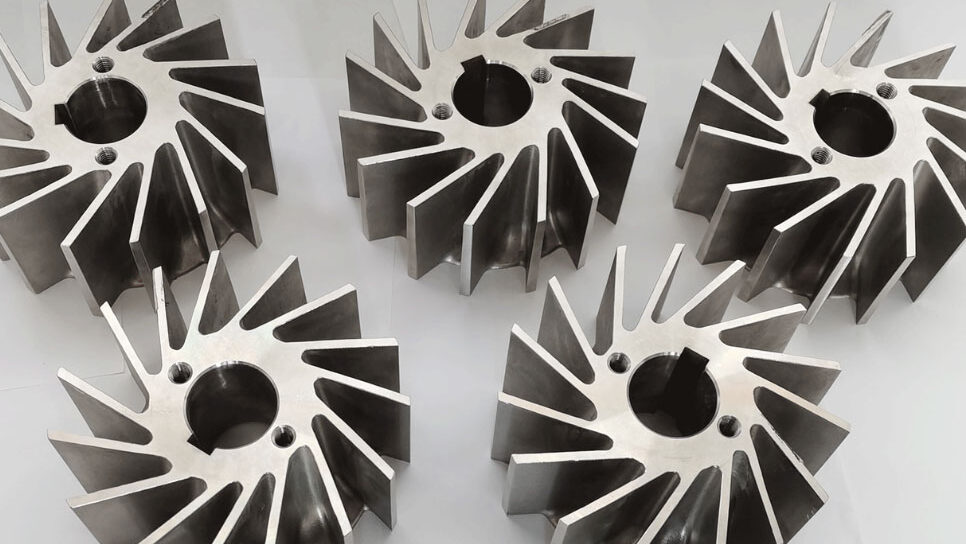Pump Impellers: 3 Different Types and How to Choose the Right One
An impeller is the heart of a pump. As the rotating component that transfers the motor’s energy onto a fluid, it plays a vital role in maintaining the flow and pressure in a pump.
Impellers do a marvelous job of transferring liquids by creating centrifugal force while minimizing agitation and maximizing the pump’s efficiency.
Centrifugal pump impellers vary in diameter, material, and number of vanes. The size of the protective wall around them, also known as a shroud, also varies. The presence or lack of a shroud classifies impellers as either open, semi-open, or closed.
The right impeller should fit well, withstand the liquid you’re pumping, and be able to resist wear and tear well, all without costing a fortune.
Consider these factors when making a selection:
- Size or diameter of the impeller
- Nature of the liquid to be pumped
- Material of the impeller
- Cost and maintenance of the impeller
We’ll show you how to select the right pump for the job, but first, here are the three pump impeller types to choose from.
1 – Open Impellers

All centrifugal pump impellers have rotating blades, called vanes, but in open impellers, the vanes don’t have any covering, resulting in an open design.
An open design makes an impeller suitable for handling liquids with suspended solids. Sewage is a good example and passes through an open design easily.
Another advantage of an open design is that it enables easy cleaning and repair of the vanes since they’re not covered by a metal plate.
However, open impellers are weak due to the lack of support around their vanes. They struggle to generate pressure, rendering them less efficient than semi-open and closed impellers.
As a result, they tend to be used in small pumps that don’t have to handle many operations.
Open impellers operate at a higher NPSH (net positive suction head) to prevent cavitation and increase pump efficiency.
What is Cavitation?
Cavitation is the formation of cavities around the impeller where pressure is usually low. They form when the liquid’s pressure drops below vapor pressure and turns into bubbles.
As the bubbles move to high-pressure areas of the pump, they gain tremendous energy that causes them to implode on the impeller, forming cavities.
The cavities cause mechanical damage that leads to noise, vibration, and deterioration of the entire pump, making it less efficient.
Oversized pumps may run at a higher pressure and flow rate than their application requires. That pressure is far from the ideal operating point, known as the best efficiency point (BEP).
It’s best to modify the impeller in such pumps to avoid energy waste. You can do so by trimming the vanes to reduce the impeller’s diameter. This process results in an overall circumferential speed reduction at the impeller’s outlet.
When the outside diameter is reduced, so are the flow rate and head, but this doesn’t alter the rotational speed. This process improves impeller capacity, which saves energy and reduces costs.
Trimming an impeller is considered when:
- Open system bypass valves create an excess flow rate
- An oversized throttle pump provides head that exceeds process requirements
- The flow rate and operating head exceed process requirements
Note: Limit trimming to 75% of an impeller’s diameter. Trimming 5-10% more than the recommended 75% increases the net positive suction head required (NPSHr) due to recirculation between the impeller inlet and discharge.
A bit of clearance space must be left between the impeller vanes and casing to minimize the liquid’s recirculation.
2 – Semi-Open Impellers

Semi-open impellers have a metallic back wall that strengthens their vanes more than open impellers. However, the front side remains open.
Their efficiency is between that of open and closed impellers, making them suitable for medium-sized pumps.
Semi-open impellers can handle liquids with higher levels of solids, such as mud, better than closed impellers. They’re able to do so because they aren’t restricted by their back wall, as closed impellers are.
A shroud’s mass determines the impeller speed, so semi-open impellers rotate faster than closed impellers but slower than open impellers.
Semi-open impellers can handle mud and fibrous material, such as paper pulp, well. However, constant pumping of these solids wears on the impellers as the solids rub against the vanes repeatedly.
As they wear out, the space between the casing and impeller vanes, known as clearance, increases. This causes slipping and recirculating of the liquid, leading to pump inefficiency.
You can correct the wearing out of semi-open impellers by making axial adjustments. A small variation in axial clearance simultaneously changes the axial size of the front and back clearances, greatly improving the pump’s performance.
However, a large axial clearance at the front will decrease the pump’s head and inefficiency, but it won’t affect the shaft power.
Axial clearance mostly affects volumetric efficiency. As clearance increases, the volumetric efficiency decreases, making it the main factor in how much axial clearance is needed.
3 – Closed Impellers

Closed impellers have a back and front covering, making them stronger than both open and semi-open impellers. They’re used in large pumps and provide adequate flow at low NPSH.
Their design is more complicated than open and semi-open impellers because more materials, like cast iron and bronze, are required to fabricate them. This also causes them to be costly.
Closed impeller vanes usually have a single backward curvature, but there are wider types with double-curved vanes featuring twisted suction ends. The latter are referred to as Francis or mixed flow vanes.
Closed impellers transfer clean liquids with low viscosity, like fresh or salt water. As such, they’re often used in water treatment plants. Any contact with solids clogs them, and cleaning becomes difficult due to their enclosed design.
Closed impellers are very efficient because the liquid flows through the impeller’s eye and is directed between the two shrouds in a circular movement.
These impellers generally lose efficiency as the wear ring clearance increases. Wear rings control the discharge fluid that may flow back to low pressure.
The table below summarizes the differences between open, semi-open, and closed impellers:
| Open Impellers | Semi-Open Impellers | Closed Impellers |
|
|
|
Let’s now take a look at what factors you should consider when purchasing an impeller.

How to Choose the Right Impeller
Material
Consider whether the impeller’s material can resist abrasion and corrosion. Stainless steel is the most common impeller material because of its anti-corrosive, anti-heat, and anti-contamination properties.
Bronze is a good choice when pumping liquids that contain salt. In such a case, gunmetal, a type of bronze, is used for the impeller.
Cast iron is cheaper than brass or bronze, and it’s resistant to alkali corrosion. But, if you’re dealing with acids, cast iron impellers aren’t a good choice because they’ll rust.
A good choice when pumping acids is an impeller coated with polymers. The extra layer is applied on areas prone to wear, and the impeller remains protected as long as there’s no damage to the coating.
Type of Liquid
If you’re pumping wastewater, the water may contain solids, foamy matter or stringy substances. In this case, the best option is an impeller that allows the passage of solids without clogging.
When dealing with a viscous liquid, you’ll need an impeller optimized to perform well with viscous liquids. This is because high viscosity slows down an impeller’s functionality and affects pump performance.
Compatibility
Sometimes, pump manufacturers make oversized pumps to leave room for viscosity changes. This wastes energy because the pump is operating at high pressure.
When getting a new impeller, have its diameter trimmed to ensure compatibility with the pump. Pumps are designed with shaft casings that can accommodate different impeller sizes.
Cost
The cost-effectiveness of an impeller is of utmost importance. That means considering all the above suggestions, including maintenance costs, and getting a good quality impeller at a price that won’t drain your pocket.
Choose the Right Pump for the Application
Pump impellers are classified as one of three types: Open, semi-open, or closed. Their classification is based on whether they have a protective shroud or not.
Open impellers handle solids well and operate at a higher net positive suction head (NPSH), while closed impellers handle liquids well and operate at a lower NPSH. Semi-open impellers share common features of the two.
To choose the right impeller, first determine what kind of liquid will be pumped. Is it corrosive or highly viscous?
The material used also determines how well an impeller can withstand wear and tear when subjected to different temperatures, pressures, and liquid types.
Sanitary Fittings provides quality steel products to major industries. From breweries and wineries to pharmaceutical industries, we are your low-cost provider.
Our customers love us because we specialize in prompt delivery. Their testimonials prove how efficient we are at serving you.
“Order confirmation, invoice, and shipping information was provided very quickly, even without formally requesting them.”
– Steven Frydrych
Need help selecting a product? Let us help you today.
Share on LinkedIn:


